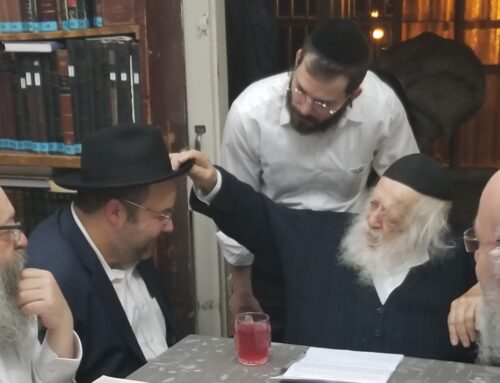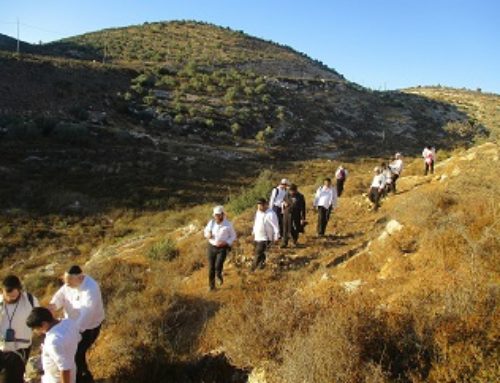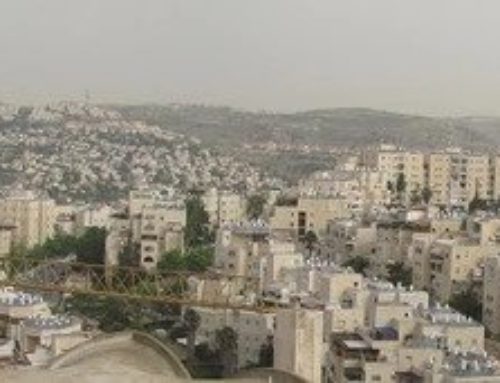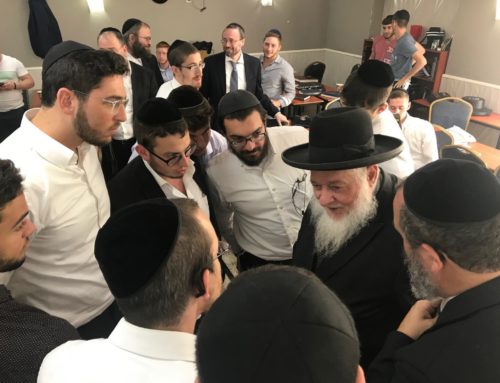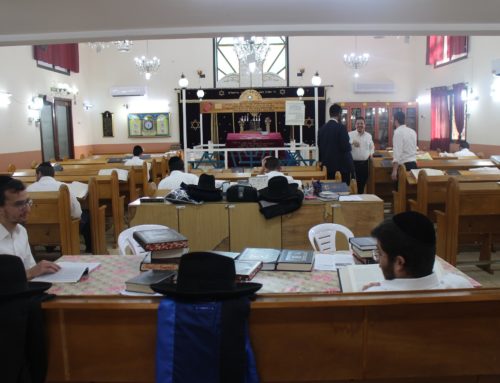Living the Dream
Yisroel Perlowitz, Kiryat Shmuel, Chaifa (Haifa)
I grew up in Lakewood, New Jersey.
My parents moved to Lakewood in the mid 80’s after they got married, and my siblings and I were raised in Lakewood as a part of the BMG yeshiva. My parents both worked, yet my father was (and still is) always with a sefer in his hand. We were the typical Lakewood Charedi working family.
My mother always had the dream of living in Eretz Yisroel, and instilled in us a true love for it, inspiring us to move there when we would have the ability to do so. Ever since I came to Eretz Yisroel as a bochur to learn in yeshiva, it became my dream, too. The idea of being surrounded by Yidden everywhere and feeling that I am among brothers (even the taxi drivers!) really appealed to me.
After getting married and living for seven years in Lakewood, it was time to realize the dream. We knew we wanted something different than the usual Yerushalayim or Ramat Beit Shemesh. Nefesh B’Nefesh’s Go North program, designed to encourage immigration directly to the northern part of the country, prompted us to explore possible options there. We did a bit of online research and found some information about Kiryat Shmuel; we saw that it could be relevant to us. After further research, which included contacting local residents, we decided on our move from Lakewood to Kiryat Shmuel.
We moved in November 2016, shortly after our oldest child had just started first grade. She went straight into first grade here too, and within four weeks was already speaking Hebrew! Our second child had a bit more difficulty with the language, so she was kept back an extra year at gan just to give her more time, so that she would be better equipped to succeed in first grade. The schools here are very warm and welcoming, and the teachers treated our kids a bit easier to ease their transition.
Kiryat Shmuel is one of the neighborhoods and cities that make up what is commonly known as the Krayot (lit. boroughs). Though it is a relatively small and self-contained community, it is under the municipal jurisdiction of the large northern coastal city of Haifa, and therefore enjoys amenities that may come with a large city such as municipal garbage cleanup, upkeep of the streets and other “city” advantages.
Within the neighborhood, there are several different schools serving the different segments of the population. There is a kosher mehadrin supermarket, walkable from most areas of the neighborhood, that caters to all the frum people with mehadrin hechsherim, and there’s a mehadrin pizza and ice-cream store in the neighborhood as well. There are also branches of the Osher Ad and Rami Levy supermarkets about a ten- to fifteen-minute drive away. It takes just a twenty-five-minute walk or a five-minute drive to get to the kosher separate beach.
The neighborhood is by and large Torah-observant, and as such is closed to traffic on Shabbos. The rav of Kiryat Shmuel for over six decades was Rav Akiva Hacarmi zt”l, a brother-in-law of Rav Mordechai Gifter zt”l (their wives were sisters). After his passing, two of his sons continue his legacy. One son heads the kollel and yeshiva, and another heads the Merkazi (Central) shul, with several hundred members and a dozen minyanim daily.
The neighborhood is made up of about sixty percent Dati (i.e., non-Chareidi religious), twenty percent Charedi – most of whom are Sephardic, ten percent Chabad and ten percent nominally observant. There are about thirty English-speaking families in the area (including an English- speaking doctor who immigrated from Brooklyn a few years ago), but they are all integrated into the larger community.
There are about thirty shuls that cater to the various groups; however, in all honesty, they are all mixed. It is really beautiful to see how everyone davens with everyone else. On Simchas Torah, the main Ashkenazi shul meets up with the Sephardic shul to dance together.
When our infant son was diagnosed with Menkes disease not long after we arrived (a story in and of itself), we personally felt the spirit of achdus that pervades Kiryat Shmuel. The community immediately sprang into action with an immense outpouring of heartful help. I got a phone call from one young adult community member that they would be available at all times to help us, with night-time hospital shifts and the like, and that we shouldn’t even think of financial remuneration.
Another thing we came to appreciate during the short life of our son a”h, is the high level of medical and social services offered here, on a par with anything we’d find back in the U.S. Within relative proximity to our community there is a frum educational facility for special-needs children which he was able to attend. The devotion of the staff is exceptional; a short time before he was niftar, the staff and their families basically fought over who would be privileged to host him while we went on a much-needed vacation.
With its universities and medical centers, the general Haifa area attracts many students, and is home to many medical students and professionals. Hi-tech is also very popular here. If you know Hebrew and have some type of tech background, you have quite a good chance of finding a job here. In my area there are some full-time kollel learners as well. I myself do computer work for an American company.
The wide range of housing that exists here – apartments, duplexes, and single-family homes, from 500K to two million shekels – is significantly cheaper than in the center of the country, and you also get much more for your money.
Yes – there are areas to live in outside of Ramat Beit Shemesh! It is a very beautiful country out here!
Connected
Kiryat Shmuel is located on the main train line with access to direct trains to Tel Aviv (under 90 minutes with the express trains), Beer Sheva, the airport, Modiin, Karmiel, and Nahariya. There is only one transfer needed to get to Yerushalayim.
In the pre-Corona days, there were trains at all hours of the day and night. They are now still very frequent, from the early morning hours until very late at night.
This article is part of our Haaretz Hatovah series featuring Yidden living in, settling, and building up Eretz Yisroel. For more information please contact us at [email protected] or visit naavakodesh.org/haaretz-hatovah
Reprinted with permission from Yated Ne’eman


